Every Picture Tells a Story: Photographers Discuss the Best News Photos of 2014
As the end of the year approaches, Reuters picture editors have chosen key images from 2014 and asked the photographer to tell the story behind each picture.
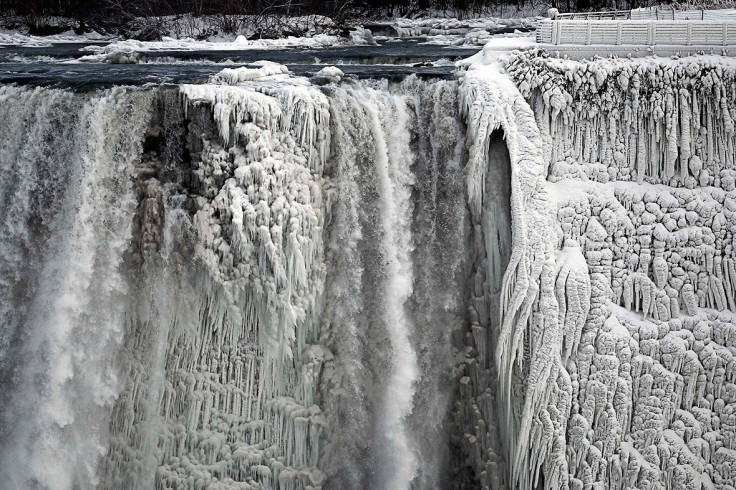
Aaron Harris: "I was out on a specific assignment to photograph the partially frozen Niagara Falls. There was a lot of angry muttering under my frozen breath that day, mostly asking myself why I lived there in winter, laced with several expletives.
"I wasn't outside for very long, but taking photographs in such a bitter-cold temperatures was challenging. I was dressed appropriately for the weather, but the bone-cracking cold still pierced through all the layers. I had only brought two cameras and two lenses knowing there was no way I'd be changing anything out there.
"For such a static landscape image I thought it was strong, and from what I've seen and heard, it was widely published. I didn't think the image would strike the chord it did, as I've never photographed a weather feature generating so much of a reaction. I think it was a testament to how strongly people felt about the miserable winter we had to endure."
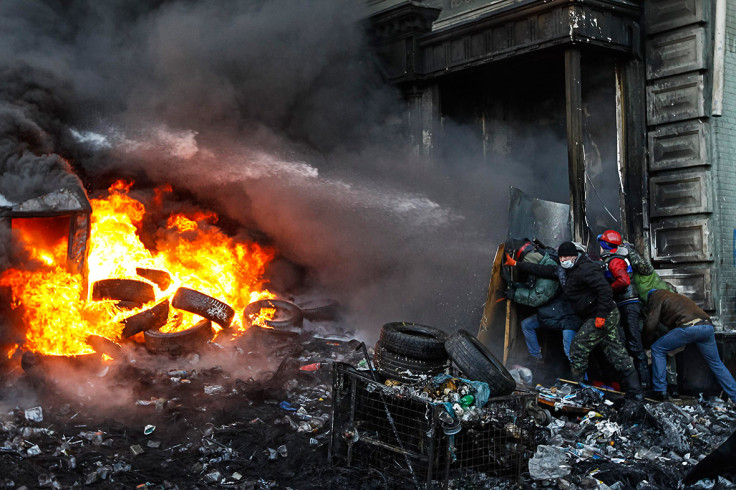
Vasily Fedosenko: "Every day protesters moved up to the barricades, made from burnt buses and cars, to clash with the police. It was winter, cold, and police used water hoses to turn the streets in front of the barricades to ice.
"The protesters kept moving up to the police positions to throw Molotov cocktails and the police kept driving them back with rubber bullets and water hoses.
"This happened for many days. Molotov cocktails were everywhere - in the air, being thrown at the police and behind barricades ready to be used. The flag of Ukraine was seen everywhere, and one song was sang many times a day - the Ukrainian national anthem.
"To shoot pictures every day in a bulletproof vest and helmet, while walking among the piles of burnt tyres and avoiding rubber bullets was a challenge.
"I was surprised by the strong desire of the protestors to change something in their life, how they helped each other - many people, including the very old, brought warm clothes and hot food to them."
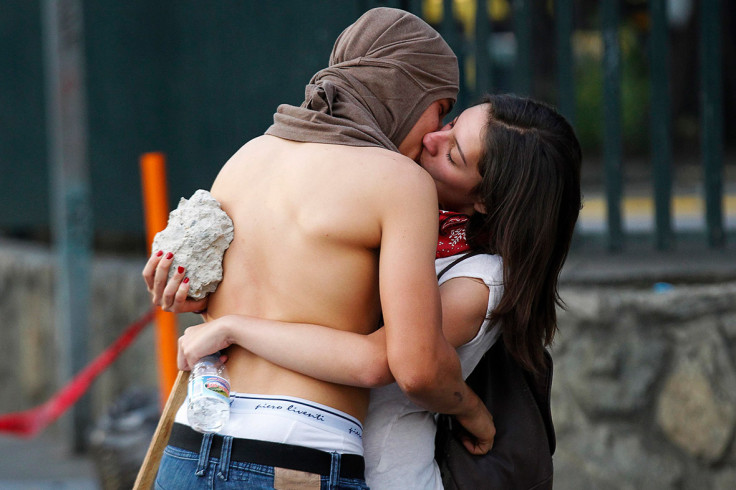
Christian Veron: "I was covering a Caracas rally against Nicolas Maduro's government. Students were setting up a blockade and several had been arrested. They were organising their counter-attack against the police when this girl, ironically the daughter of a government employee, suddenly appeared with a stone in her hand. I pointed my camera towards her as she walked up to her boyfriend and kissed him intensely in the midst of disaster.
"The challenge and the biggest reward of this picture was capturing something different to the tear bombs and shooting, an intimate and personal moment in the middle of chaos, something with soul and heart.
"The moment I took it, I knew this photo had something special, but I didn't realise the image's power until next day, when it went viral on social media. The photo is inspiring. Love is everywhere."

Lunae Parracho: "I was flying over the Amazon alongside an Ashaninka chief who was searching for illegal logging on their lands.
"It was a bad flight. Grey skies and heavy winds, over a sea of unbroken forest – no sign of humanity all the way to the horizon.
"Suddenly, down below us, we saw a spot of clearing and this group of isolated Indians. The way they raised their spears and bows against us, it felt like I was witnessing the last line of human resistance against the world the rest of us have made.
"Three months after this photo was published, the same group of Indians made their first formal contact with the Ashaninka people and Brazil's national Indian agency (Funai). They said encroaching non-Indians had burned their villages – which lie in a border region with known drug trafficking and illegal logging activity.
"Immediately after meeting the outsiders, several of the Indians fell ill. Funai says the situation is under control: It provided flu shots and has reopened a local base that it abandoned three years earlier, following an attack by cartel gunmen."
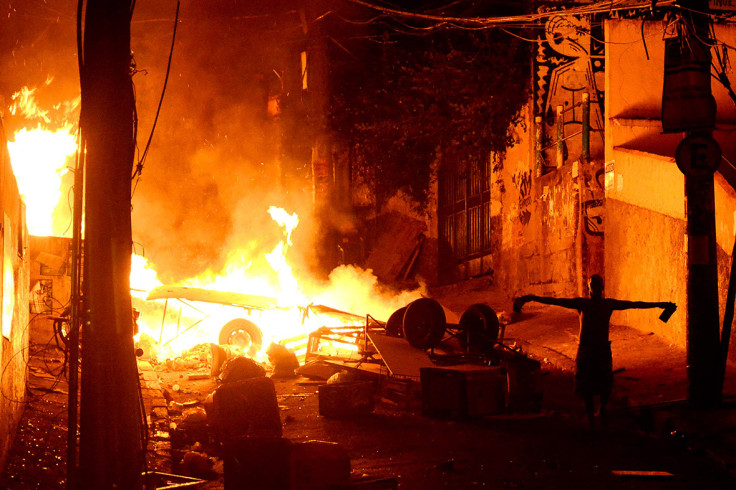
Lucas Landau: "Police Peacekeeping Unit (UPP) officers were accused of causing the death of a dancer, Douglas Rafael da Silva Pereira, 25, who was found dead inside a school at the community.
"When the shooting began I was at home. The favela is just round the corner, so I saw the police cars in the streets, fire in the slum and the street gradually emptying. When I arrived at the slum the residents were in one corner and the police in another. Both screaming and very tense.
"The residents had set fire to the entrance of the slum, to stop the police getting in. But the police had guns pointed at them all the time. That's why the man in the picture is opening his arms, to show the police that he is 'clean'.
"After that, the residents left the body, covered in blood, in the middle of the street and the police went in to get the dead man. I was the only one that took these pictures, because I was the first photographer to get there."
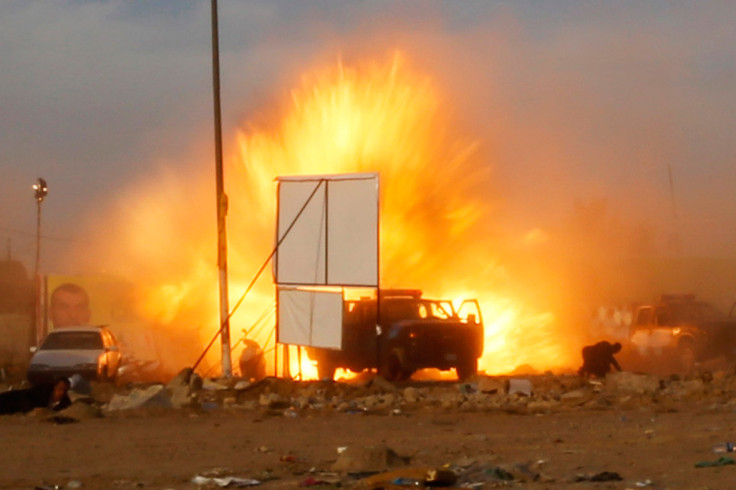
Thaier al-Sudani: "After I was done taking pictures and trying to reach our driver's vehicle to return to the office, a powerful blast hit an exit gate. We tried to find a place to hide because we were expecting a secondary explosion and at the same time we were keen to keep documenting the incident.
"Screams of the wounded, black smoke and bodies surrounded us, while security forces and militia members were shooting in the air to disperse the crowd. I tried to take cover behind anything close by. Reuters cameraman Mahdi Talaat and I could only hit the ground and film the event that was taking place in front of us.
"Then a minibus that was advancing towards the site caught our attention. The car was only a few metres away from our position and heading towards a gate when it blew up. The blazing fire, smoke and the blast's shockwave along with shrapnel raining down on us and the wailing of the wounded made us believe that we were witnessing judgment day.
"This incident has had a great impact on me and resulted in raising my awareness and developing a great internal fear of street gatherings, protests and celebrations. Images of the incident are still fresh in my mind and they keep replaying in my head every time I see a large gathering of people and it even haunts me in my sleep at times."
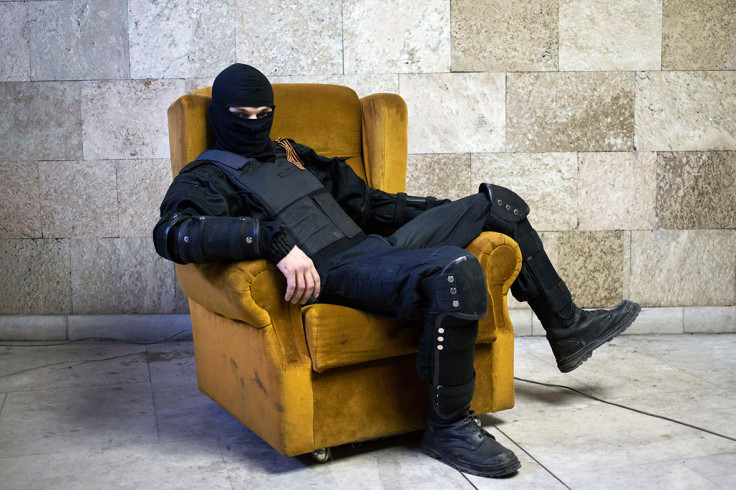
Marko Djurica: "On March 3, a couple hundred pro-Russian demonstrators stormed the Donetsk regional government building after clashing with police who were guarding the main entrance. They successfully entered through a side door, and in the end made it to the second floor where the parliament sits. Unrest continued to spiral in Ukraine and the following month separatists declared a 'People's Republic of Donetsk'.
"Two months after these initial attacks, protesters were still inside the regional government buildings and masked men guarded the barricades. I asked to take a series of portraits of these men. I saw a massive chair underneath a neon light and I picked my lens, adjusted the light, and people began to pose in shifts. Each subject was relaxed, and struck whatever pose suited him.
"Later, they asked with interest how people in Europe see the situation in Ukraine and wanted to know if anyone supports them, and what will happen in the end. They seemed a bit scared. I didn't have a good answer to their last question."
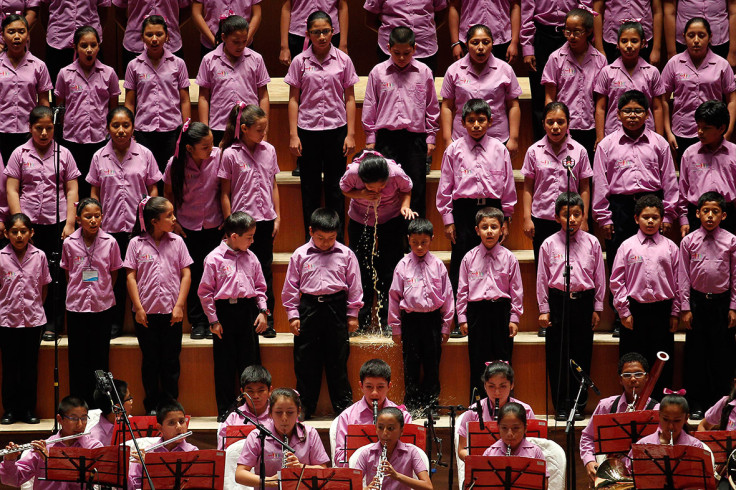
Enrique Castro-Mendivil: "I was covering a concert at Lima's National Theatre, awaiting the appearance of Peruvian tenor Juan Diego Florez, who was singing with the young members of the orchestra he was sponsoring, 'Sinfonia por el Peru'.
"Moments before he showed up, a choir girl in the middle started vomiting. The children were performing for a very refined audience that came to see Florez, and perhaps she couldn't handle it. When she threw up for a second time, her vomit splashed onto the kids around her. They were all very professional and continued performing until eventually she was told to step off the stage."

Benoit Tessier: "I was covering the stars' red-carpet arrival for the film screening of How to Train Your Dragon 2. Suddenly Vitalii Sediuk, a Ukrainian journalist also known as a red-carpet prankster, tried to stick his head under actress America Ferrera's netted skirt.
"I had only 10 seconds to realise what was happening and take the shot. Security rapidly dealt with the culprit amid shocked looks from Ferrera and co-star Cate Blanchett. After a flash of appearing red faced and confused, the actress continued the red carpet walk as if nothing had happened."

Brandon Wade: "I was covering the controlled burn of a house slowly falling into Lake Whitney due to the decaying cliff underneath. Asked to take photos from an aerial perspective, I took off from Grand Prairie Municipal Airport with an instructor around 9am. The burn, scheduled to start an hour later, was delayed.
"I love flying, but patience proved challenging as circling for nearly three hours gets boring fast. Once the fire started we only had 15 minutes to take photos because the plane was booked at 1pm. The owners invested their retirement savings in the house and were even advised by geologists that the ground was stable. To watch your investment literally go up in flames must take its toll emotionally. The owners said they don't expect their insurance to cover the loss."
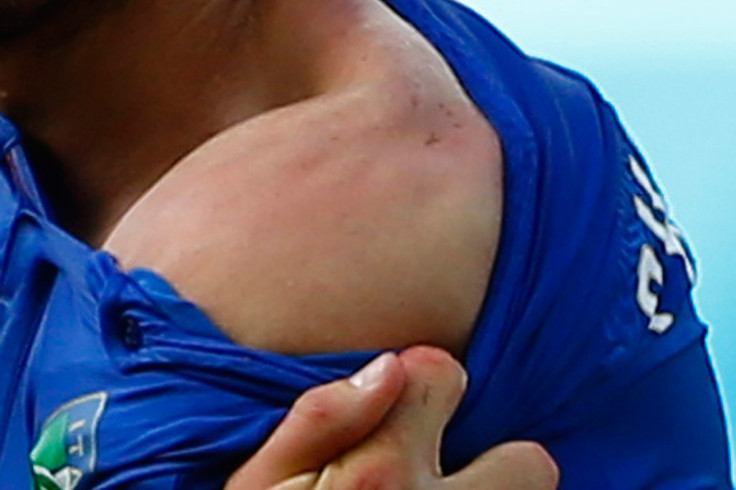
Tony Gentile: "I was covering Italy v Uruguay and it felt almost just like any other match. But in the second half, there was some strange contact between Italy's Giorgio Chiellini and Uruguay's Luis Suarez. I was following the action elsewhere on the pitch, but I saw them both fall down. They both looked like they were in pain, and I started to take pictures until Chiellini reacted angrily right in front of me, pulling down his shirt to reveal his shoulder.
"I shot some photos and, for me, the story was finished. But I only did part of the work. The second, very important part of the job was done by our great editors who spotted the teeth marks on Chiellini's shoulder, and a cropped version of my picture was sent out to our clients so they could see too."
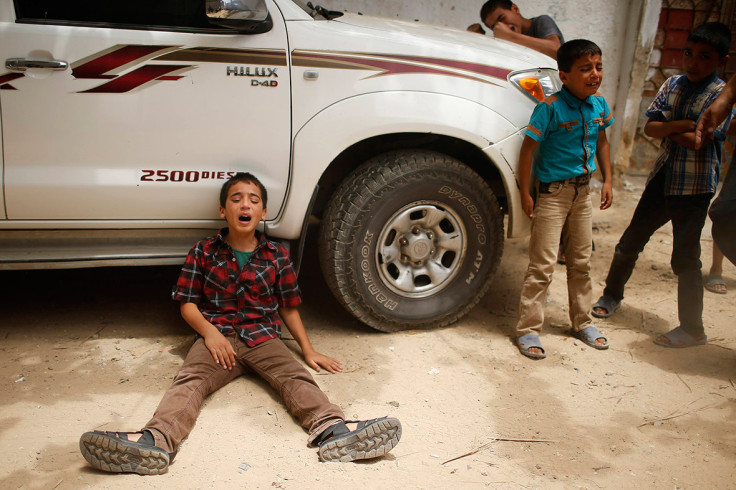
Mohammed Salem: "The strike on the family home of Al-Batsh, Gaza's police chief, killed 18 people. While I was shooting this picture loud explosions from air strikes could be heard and battles from the ground offensive were ongoing. Moments before taking this pic, mourners brought out the bodies of the family members and their relatives started to cry and shout. Suddenly, this boy fell on the ground and burst into tears shouting: 'My dad, my dad.'
"The situation was risky and I had to take the pictures quickly and leave the area as fast as possible. This picture has affected me the most from the war. As a father, I was totally shocked and sad to hear this boy crying out for his dead father."
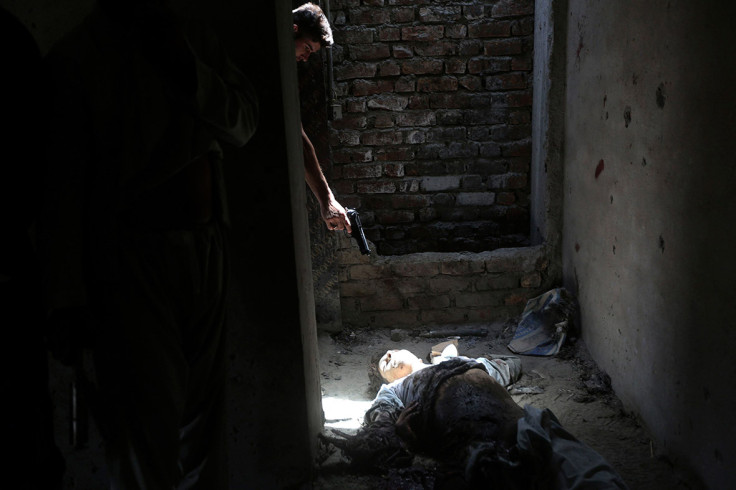
Omar Sobhani: "Militants armed with rocket-propelled grenades attacked Kabul International Airport from the roof of a building just to its north. Such attacks are not uncommon in Kabul and I have photographed quite a number of these incidents.
"After four or five hours of fighting between Taliban and Afghan security forces, all insurgents were killed and curious locals and media were allowed to enter the site. A group of unidentified men armed with guns were looking around the bodies of the dead Taliban, some of them were kicking the bodies, some cursing. One of them pointed his gun at the body of the Taliban fighter who was lying at the scene.
"I shot the frames quickly and moved back thinking he might fire and the impact could get to me. He did not fire."

Ibraheem Abu Mustafa: "I was at a house with my colleagues monitoring the situation in Rafah, when I heard two huge explosions. The shout went up: "A hit by Israeli F16!" Once I realised that the house had an asbestos roof, I knew there would be serious casualties.
"First they removed the body of an old man and then people started to shout: "Children under the rubble!" I rushed to the closest position to photograph these kids. The boy in this picture was later identified as Mahmoud al-Ghol. He is 10 years old.
"Nine of Mahmoud's relatives, including his uncle's family, were killed in the strike and another seven were wounded. Seeing him beneath the debris was the worst experience of my life. Tears were running from my eyes while I was taking the pictures. Looking at the boy was like looking at my own son.
"A colleague of mine knows Mahmoud's relatives and after the strike he helped me to trace him to where he was being treated in hospital."
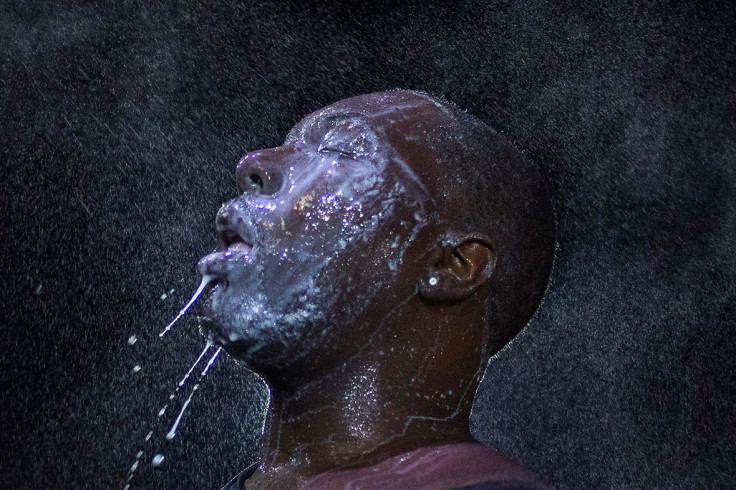
Adrees Latif: "As the evening rolled past midnight, I saw one man among the crowd who looked particularly agitated. He seemed to be a local resident, very upset with the police, and people were holding him back as he yelled towards the officers.
"As he kept shouting, the police targeted him with some kind of eye irritant – it looked like pepper spray. He wasn't very close, but they got him right in the eye and his friends immediately pulled him to a parking lot nearby, where they poured milk on his face to flush away the effects of the spray.
"As they started to pour the milk, I began photographing and noticed a bright spotlight in the background. I believe it was from the police. At that point the people taking care of the man started spraying mist or water to further clear his eyes and I positioned my camera and used the light source to create a rim light around his head and bring attention to the droplets."
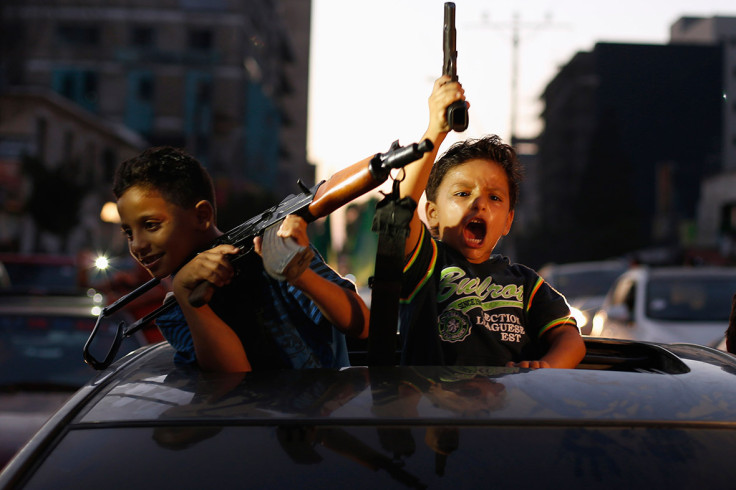
Suhaib Salem: "I was covering the celebrations by Palestinians moments after the declaration of a ceasefire that ended a 51-day fighting between Israel and Hamas.
"Throwing sweets and chanting slogans, people took to the streets, riding vehicles and motorcycles, to celebrate what they said was victory over Israel.
"Moments before taking this picture, the battles between Israel and Gaza's militants were taking place and explosions could be heard till the truce was announced. The scene was special as children were smiling, holding a pistol and weapon, and showing no sign of fear.
"It was quite difficult to take the picture since there was not enough light, and the car was driving quickly. My movement was also restricted due to the traffic jams and flows of people in the streets."
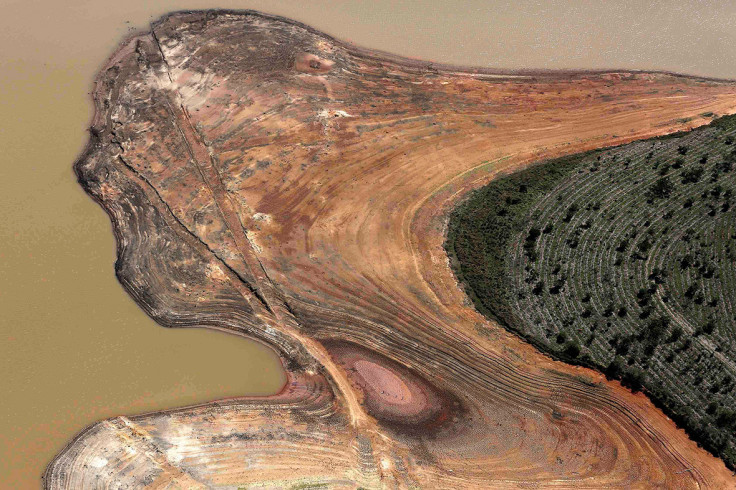
Nacho Doce: "Words can't express what it feels like to view a landscape as bleak and disturbing as the one in this photo. In the four years I've lived in Brazil I've seen many extraordinary and terrifying things, but the current drought surrounding Sao Paulo for the past nine months surpasses all.
Without rain, the reservoirs that provide South America's largest city with water are at their lowest level in decades. I rode in the helicopter to take this and other aerial photos. It was only after landing and opening the image on a computer that I noticed the real message that of a woman in panic as in Edvard Munch's painting The Scream. For me, this is Mother Nature screaming for help."
© Copyright IBTimes 2025. All rights reserved.




















